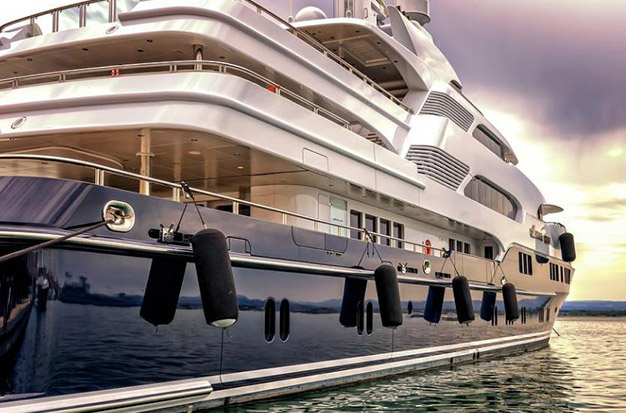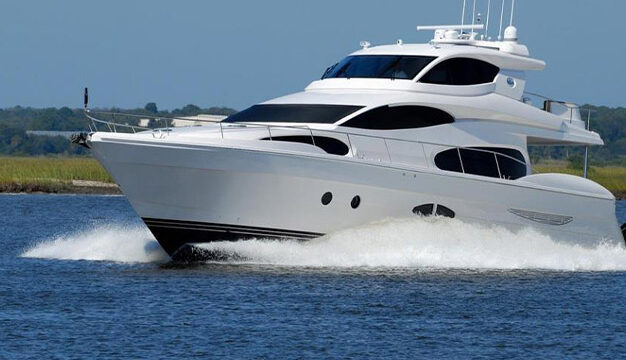Planning a yacht charter is an exciting but difficult task, particularly when starting to estimate the cost. The weekly rate to rent a yacht has a base price. But what additional costs, such as those for food and drink, local taxes, or fuel, must charterers cover in addition to the base costs?
The good news is that understanding the foundations of yacht charter pricing is simple. And this can assist you in determining the price of your upcoming once-in-a-lifetime trip more precisely.
The type of yacht, the location of the charter, any applicable local taxes, and the base price all affect how much a yacht charter will cost. (The price may also increase if the yacht is owned by a famous person.)
Consequently, there is a wide range of base prices for yacht charters. Because of this, the price of a charter can range anywhere from $10,000 per week for smaller sailing yachts and catamarans to more than $150,000 per week for the most opulent motor superyachts.
What additional costs can you anticipate? This overview, which is a component of our planning tool, the Charter Advice Guide, provides a thorough analysis of charter yacht costs.
What Is Included In The Cost Of My Yacht Charter?
The two main categories of yacht charter are as follows: an all-inclusive charter and the more common ‘plus expenses’ charter. An all-inclusive yacht charter’s price will, as the name implies, include (almost) everything, including the crew, food, drinks, fuel, and equipment for participating in water sports (though always double-check as this can vary between charter companies). Some all-inclusive charters, though, exclude dockage and mooring costs, which can quickly add up; more on that later.
In a “plus expenses” or “separated charges” charter, the ship and crew are included in the base price, but all additional costs must be covered by an “Advance Provisioning Allowance” (APA) before you board the ship. The chef and service staff can stock up on the guest’s favorite items by having guests fill out a preference sheet with their likes and dislikes prior to a voyage. Due to the opportunity for a much more customized experience, this is frequently the standard for superyacht charters.
An APA will pay for things like fuel and perhaps dockage in addition to covering food and beverages. It typically costs about 30% of the yacht’s base price. According to luxury yacht brokers Northorp and Johnson, the average price paid by its customers for a week’s ‘plus expenses’ charter was around $152,000 in 2020, which would mean an APA of about $45,600 is not a small sum, so it is unquestionably something to be mindful of when choosing your vessel.
A “bareboat” charter is a third, less frequent type of charter. This type of charter, which comes without a crew or supplies, is typically only preferred by seasoned yachtspeople or those who have their own crew on hand.
Rates for private crewed yacht charters are typically thought to start around $10,000, though smaller boats can be found for less money. For a seven-night voyage around St. Through The Moorings, you can rent a crew of two to St. Lucia in July for about $7,000.
Paying $150,000 per week for a luxury superyacht is not unusual. The cost of a seven-night stay on the largest and most luxurious superyachts in the world, such as Shahid Khan’s 312-foot megayacht Kismet, which Beyonce and Jay-Z were spotted aboard in July 2018, can exceed $1.3 million.
How Much Is It To Charter A Yacht?
If you share the cost of yacht rental with a large group of people, it can be surprisingly affordable. Each person will only pay an average of S$72–S$87 per hour, depending on the day of the week, if a group of 5 people charters a yacht for the standard 4 hours. If you want to host a large birthday party or company outing, the price drops to an average of S$19 per person per hour because some charters can accommodate groups of up to 30. Obviously, the costs will rise if you intend to charter a boat for just you and your spouse. Generally speaking, Singaporeans pay S$1,660 on average per day to charter a standard yacht.
Some charters will allow you to pay an additional fee per hour (on average, S$292 per hour) if you want to extend the length of your rental. Some businesses will allow you to stay an extra night for between S$5,000 and S$8,000 for a 2D1N or 3D2N stay. Of course, you can also rent a lavish super-yacht for a few hundred thousand dollars per week. A few people in the yacht industry advise potential owners to rent a boat for a week or so before making a purchase to determine if it’s something they want to commit to.
Factors That Affect Yacht Charter Prices
Privately owned, charter yachts have owner-determined rates. This helps to partially explain the wide range of price variations among boats of comparable lengths. Nevertheless, a number of other elements, such as:
- The Yacht – The cost of a yacht can also go up depending on the boat’s year of construction, the builder, previous owners, and the water toys it has. Additionally, boats can establish a reputation, i.e. the largest or most luxurious, or having a famous builder or previous owner. Costs may vary depending on reputation.
- Season – Prices typically rise during the peak season, i.e. high summer in the In low seasons, they fall or winter in the Mediterranean or the Caribbean.
- Destination – The location of your charter also affects its price. For instance, rates rise in regions without sizable charter fleets (i.e. the Galapagos), whereas yacht rentals in the Bahamas, the British Virgin Islands, or the Mediterranean are more reasonably priced.

Additional Costs Considerations On Yacht Charter
A number of other expenses must be taken into account in addition to the cost of maintaining the yacht and provisioning. The following are the most important:
Advanced Provisioning Allowance
Approximately 25–35% of the yacht’s base price is the APA for charters with Plus Expenses. This is a charge that is paid in advance of the charter and functions much like an expense account that the captain can use while on the boat. You will be provided with a thorough accounting of your APA account at the conclusion of the charter along with any leftover cash.
Overages may necessitate that you top off the APA account while the charter is in progress. Cash can be used for this, but many choose to open accounts with their charter brokers that the captain can access.
Taxes And Value Added Tax (vat)
Most boats won’t include local taxes or a value added tax in their charter rate, regardless of whether they are all-inclusive or Plus Expenses. These taxes will be the charterer’s responsibility to pay. The following list of some of yachting’s most well-liked destinations includes a look at the significant tax differences between them:
- The Bahamas – Tax: 4%
- BVI – Tax: between $6 and $16 per person per day, depending on the flag of the boat
- Croatia – VAT: 13%
- Florida – Tax: 6% for Broward County, 7% for Miami-Dade County
- France – VAT: 20%, however, 10% can be applied when an itinerary includes International Waters
- Greece – VAT: 12%
- Italy – VAT: 22%, however 6.6% (over 24m) and 8.8% (under 24m) can be applied when an itinerary includes International Waters
- Montenegro – NO VAT
- New England– NO TAX
- Spain– VAT: 21%
- Turkey – NO VAT
Crew Gratuity
Although it is not required, giving the crew a tip is advised, especially if you were truly pleased with your charter experience. The crew gratuity, which is given to the captain at the conclusion of your charter and typically amounts to 15-20% of the base charter rate, is generally accepted.
Insurance
Similar to traveler’s insurance, charterers have the option to purchase cancellation and curtailment insurance. If a charterer needs to cancel or cut short the charter, this insurance can help with costs. Charter brokers can assist you in weighing your insurance options and frequently present a range of choices.
Delivery Fees
While most charters do not incur these costs, if you are traveling outside of the yacht’s typical cruising area, you might be asked to cover delivery fees. You typically only need to pay for the necessary fuel for the journey.
To find out more, call Worldwide Boat right away. Our charter experts are available to help you with every aspect and to outline all charter fees. Or read our Charter Advice guide for more information and tips for planning your charter vacation.
Is There A Difference In Price Between Certain Months And Others For Chartering?
Your charter price is influenced by the season. There are two main seasons for yachting: summer and winter. Chartering during these times will result in a price increase. Peak rates occur in July and August during the summer season, which lasts from May to October. The winter season lasts from November to April, with Christmas and the early part of the new year seeing the highest rates. Location also influences a charter’s cost; for instance, Caribbean charters are more expensive from December to March, while Mediterranean charters are most expensive in the summer.
What Are The Expenses Associated With Yacht Ownership?
A yacht is a very expensive asset to own, and since it depreciates over time, you almost never get your money back if you decide to sell it. The majority of people typically purchase used yachts due to the high cost of new yachts. For instance, even though we discovered that the average price of a new yacht is S$1,219,884, we also discovered that the average price of a used boat is S$683,783, though it can sometimes be less than the price of a car (S$67,500). Of course, there are a variety of factors that can influence the cost of the boat, and even some used boats can exceed $1 million. Typically, the cost will be influenced by the boat’s size, age, interior design, and other details like the technologies it uses and the cost of labor.

